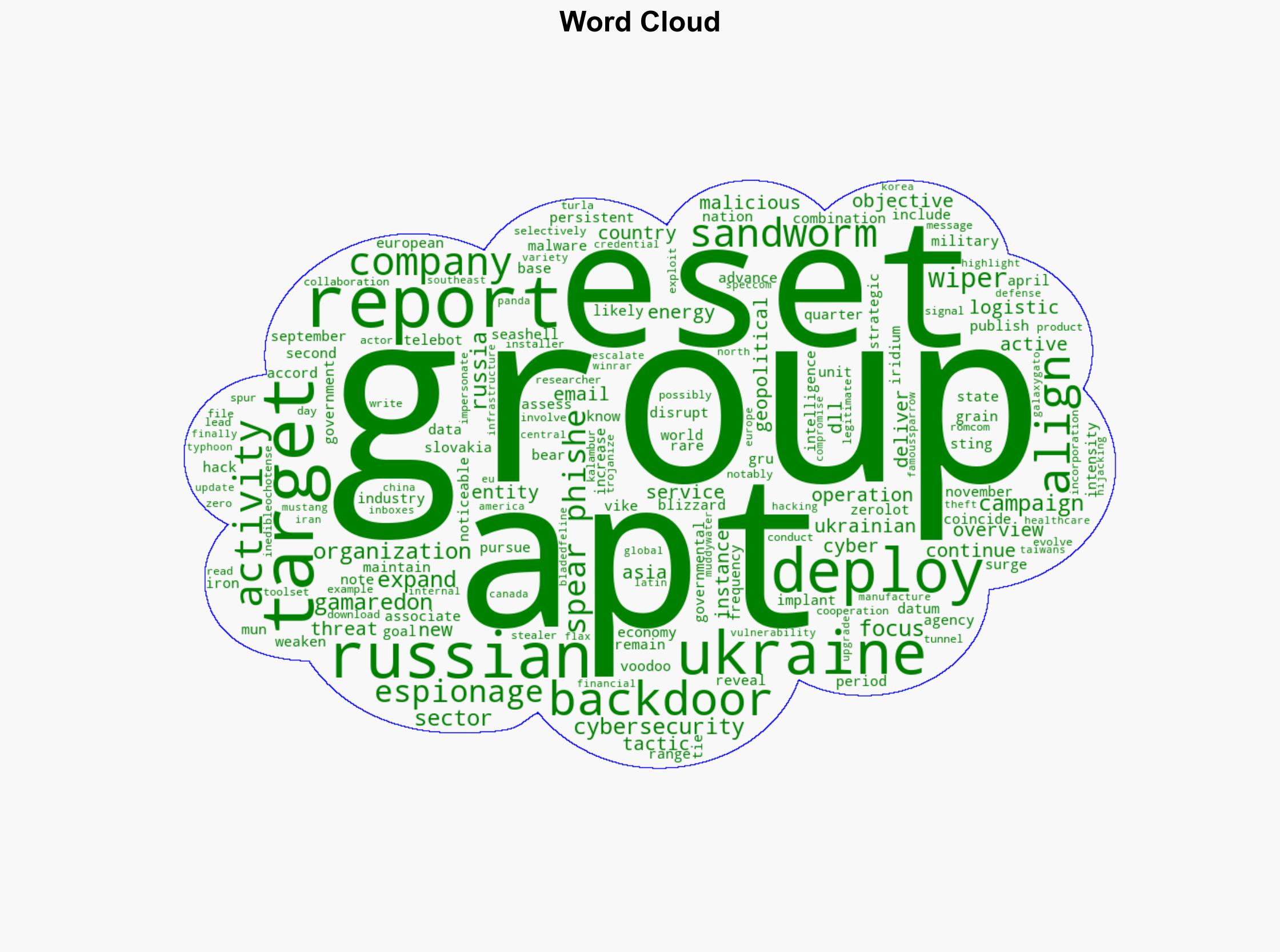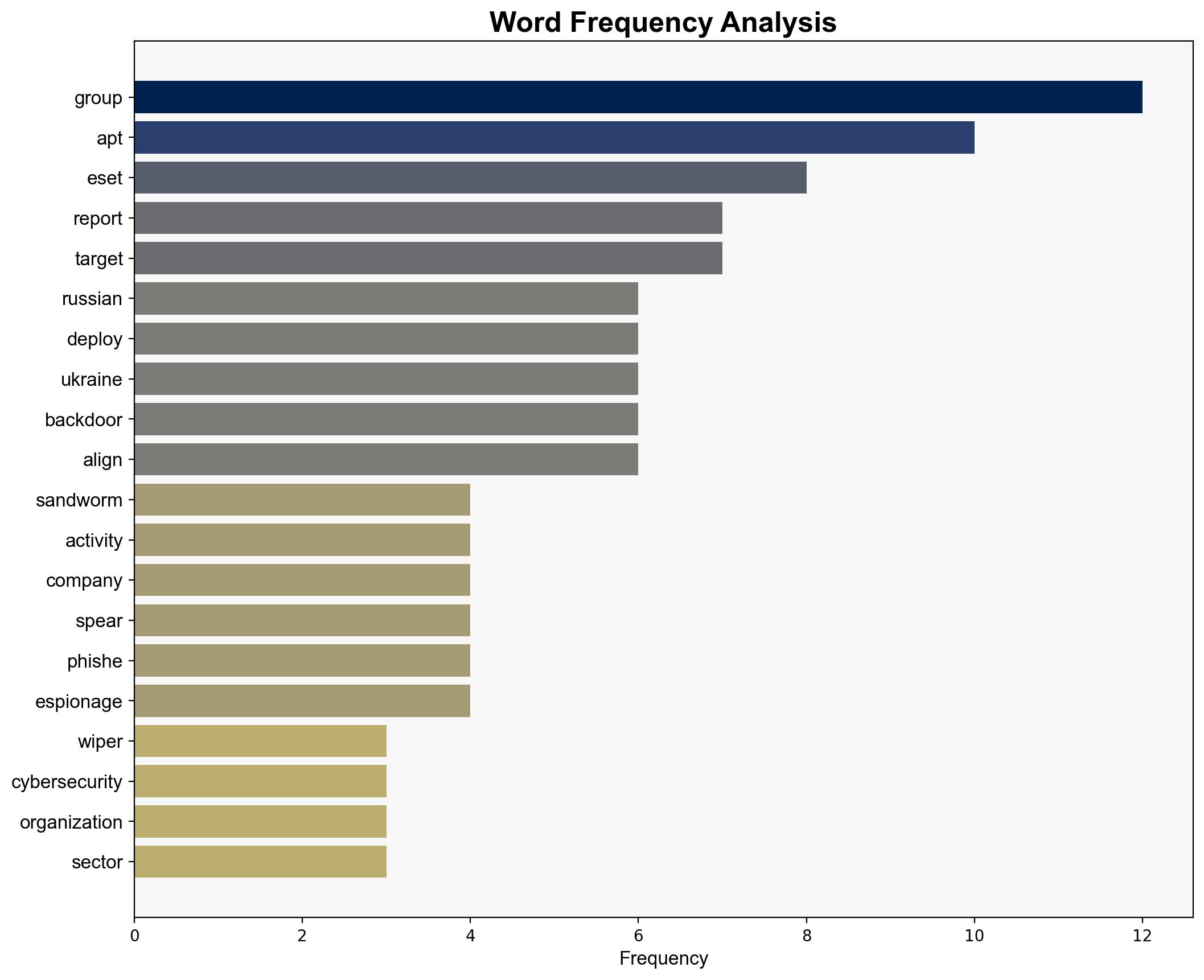Russian Hacking Group Sandworm Deploys New Wiper Malware in Ukraine – Infosecurity Magazine
Published on: 2025-11-07
Intelligence Report: Russian Hacking Group Sandworm Deploys New Wiper Malware in Ukraine – Infosecurity Magazine
1. BLUF (Bottom Line Up Front)
The Russian hacking group Sandworm has intensified its cyber operations in Ukraine, deploying new wiper malware to disrupt critical sectors. The most supported hypothesis is that these actions aim to weaken Ukraine’s economic stability and strategic infrastructure, aligning with broader geopolitical objectives. Confidence level: High. Recommended action: Enhance cybersecurity defenses in targeted sectors and strengthen international cyber cooperation to counteract these threats.
2. Competing Hypotheses
1. **Hypothesis A**: Sandworm’s deployment of new wiper malware is primarily aimed at disrupting Ukraine’s economic and strategic sectors to weaken its resilience and response capabilities.
2. **Hypothesis B**: The malware deployment is a diversionary tactic to mask broader espionage activities targeting European entities, leveraging Ukraine as a testing ground for new cyber tools.
Using the Analysis of Competing Hypotheses (ACH) 2.0, Hypothesis A is better supported due to the specific targeting of Ukrainian sectors and the timing of operations coinciding with heightened geopolitical tensions.
3. Key Assumptions and Red Flags
– **Assumptions**: It is assumed that Sandworm’s activities are state-sponsored and align with Russian strategic interests. There is an assumption that increased cyber activity correlates directly with geopolitical objectives.
– **Red Flags**: The potential collaboration with other Russian-aligned APT groups suggests a coordinated effort that may indicate broader strategic goals. The lack of direct evidence linking specific economic impacts to the malware deployment is a blind spot.
4. Implications and Strategic Risks
The deployment of wiper malware poses significant risks to Ukraine’s economic stability and critical infrastructure. There is a potential for cascading effects on European cybersecurity, given the interconnected nature of digital networks. Geopolitically, this could escalate tensions between Russia and NATO countries, increasing the risk of retaliatory cyber operations.
5. Recommendations and Outlook
- Enhance cybersecurity measures in Ukraine’s critical sectors, focusing on energy, logistics, and government entities.
- Strengthen international collaboration on cybersecurity intelligence sharing and coordinated responses to cyber threats.
- Scenario-based projections:
- Best: Successful mitigation of malware impacts through enhanced defenses and international cooperation.
- Worst: Escalation of cyber operations leading to significant economic disruption and geopolitical tensions.
- Most Likely: Continued cyber skirmishes with periodic disruptions, prompting incremental improvements in cybersecurity posture.
6. Key Individuals and Entities
– Sandworm (also known as TeleBots, Voodoo Bear, Iridium)
– ESET (Slovakia-based cybersecurity company)
– Gamaredon, Turla (Russian-aligned APT groups)
7. Thematic Tags
national security threats, cybersecurity, counter-terrorism, regional focus





